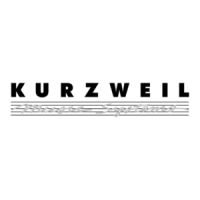KDFX Reference
KDFX Algorithm Specifications
10-9
seamless. Density controls how tightly the early reßections are packed in time. Low Density settings have
the early reßections grouped close together, and higher values spread the reßections for a smoother reverb.
Figure 10-2 Simplified Block Diagram of Dual MiniVerb
Dual MiniVerb has a full MiniVerb, including Wet/Dry, Pre Delay and Out Gain controls, dedicated to
both the left and right channels. In Figure 10-2, the two blocks labeled MiniVerb contain a complete copy
of the contents of Figure 10-1. Dual MiniVerb gives you indepenent reverbs on both channels which has
obvious beneÞts for mono material. With stereo material, any panning or image placement can be
maintained, even in the reverb tails! This is pretty unusual behaviour for a reverb, since even real halls will
rapidly delocalize acoustic images in the reverberance. Since maintaining image placement in the
reverberation is so unusual, you will have to carefully consider whether it is appropriate for your
particular situation. To use Dual MiniVerb to maintain stereo signals in this manner, set the reverb
parameters for both channels to the same values. The Dry Pan and Wet Bal parameters should be fully left
(
-100%
) for the left MiniVerb and fully right (
100%
) for the right MiniVerb.
MiniVerb Parameters
Page 1
Page 2
Wet/Dry 0 to 100%wet Out Gain Off, -79.0 to 24.0 dB
Rvrb Time 0.5 to 30.0 s, Inf HF Damping 16 to 25088 Hz
L Pre Dly 0 to 620 ms R Pre Dly 0 to 620 ms
Room Type Hall1 Diff Scale 0.00 to 2.00x
Size Scale 0.00 to 4.00x
Density 0.00 to 4.00x
Pan
Pan
MiniVerb Balance
Balance
L Input
R Input
L Output
R Output
MiniVerb
Dry
Dry
Wet
Wet

